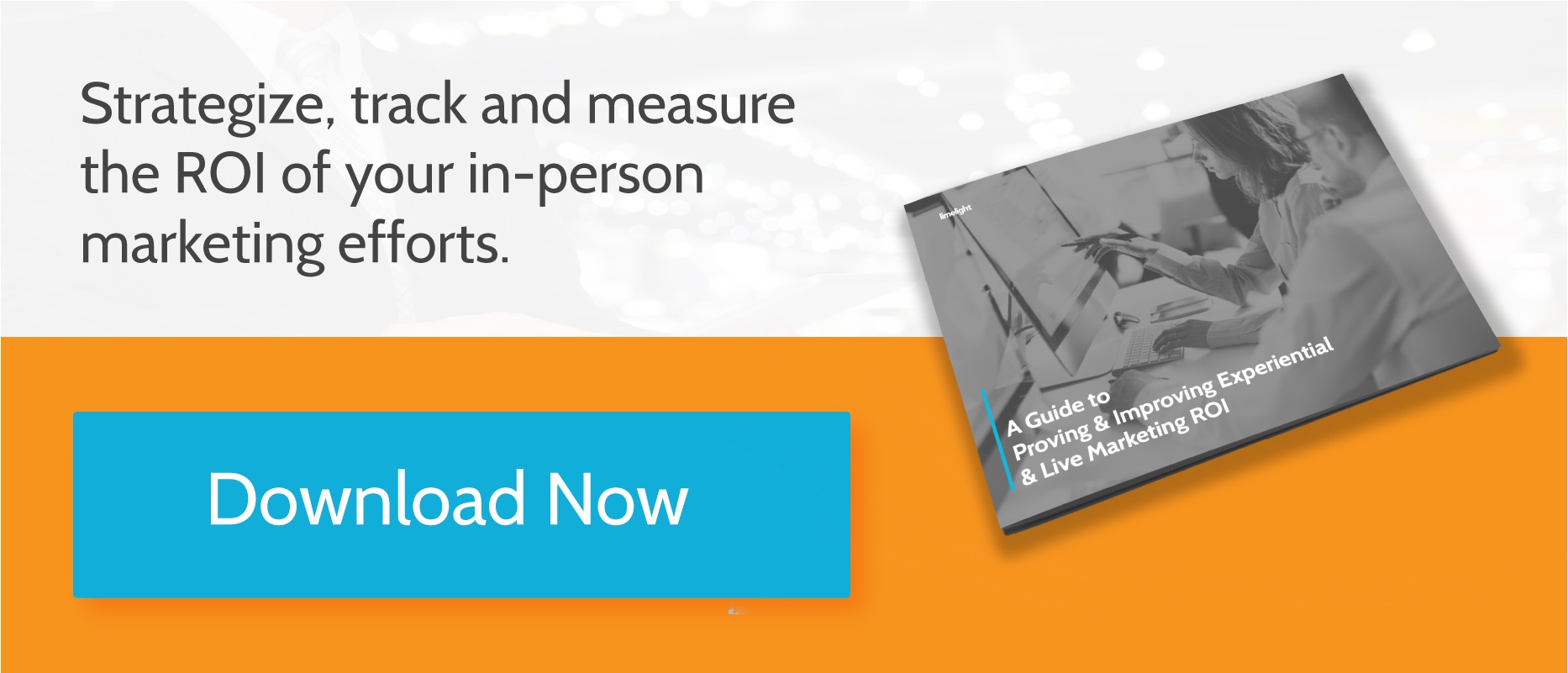Dear Experiential Marketers, You're Focused On The Wrong Things [Roundup]
.png?width=50&name=download%20(1).png) By
Julia Manoukian
·
2 minute read
By
Julia Manoukian
·
2 minute read
According to a 2017 report from Rakuten Marketing, 80 percent of global audiences say that online advertising hasn’t got any better with time. It’s no wonder why experiential marketing is taking off! But in order to maintain its place as one of the most influential marketing strategies, brands need to step it up.
The Live Marketing roundup is a weekly roundup of the latest insights in live marketing, which includes face-to-face efforts such as experiential, event and other brand marketing.
3 Priorities That Will Help Experiential Marketers Step Up Their Game in 2018
Ask agency leader Sarah Priestman what she thinks about experiential marketing, and she’ll tell you experiential is one of the most misunderstood techniques in marketing. Why?
For too long, experiential marketers have been too focused on event data and need to embrace brand planning and business results. Here are her top three strategies for doing so:
Recognize that experiential isn’t a channel.
It’s a little more than that: as Priestman says, its “the art of expressing a brand’s purpose and proposition through a form of real world consumer interaction.” Experiential is limitless; using terms like events and campaigns, says Priestman, are reductive.
Embrace brand planning.
Experiential isn’t just about a venue, the latest tech, or its popularity. Leverage brand strategists to make sure your event hits the right notes, fulfills business goals, and leaves a lasting impression.
Measure. Measure. Measure.
What’s better than seeing a satisfied look on your attendees faces? An attitudinal shift, change in consumer behaviour, incremental profit generated from the campaign. These metrics need to be measured not only to justify numbers to the C-suite, but also so that experiential marketers can continue to optimize their efforts. Perhaps most important of all is when it comes to measurement, there’s no one size that fits all.
Everything You Wanted to Know About Event ROI But Never Dared Ask
If you’re in the experiential space today, measuring the ROI of your efforts is essential. But before you start freaking out, take the time to determine the goals of your campaign, and what KPIs you should be measuring against.
Social Media
Track social through:
- Social referrals
- Track through: shortened links (use a link shortener)
- Place shortened links on each of your social media sites
- Tracking social referrals is important because:
- You want to know if it’s working
- A constant social media presence that works will decrease your marketing spend for your next event because people will know it’s coming
- Track through: shortened links (use a link shortener)
- Social proof
- Track through: referral codes to landing pages to give to past attendees
- Easy to see clicks and registrations
- Tracking social proof is important because:
- People make decisions based on reviews
- This helps get new attendees to register
- Track through: referral codes to landing pages to give to past attendees
- Social shares/impressions
- Track through: any social listening platform
- Watch posts being shared, hashtags, mentions, hot topics, etc.
- Tracking shares impressions is important because:
- You can gauge how engaged attendees are at your event
- Track through: any social listening platform
Surveys
- Completion rate, open rate, bounce rate and time on page
- With surveys, timing is everything: consider an auto-distribution method to send once they’re leaving the session
- Tracking survey results are:
- Gauge engagement level of attendees, exhibitors and sponsors
Tech
- Track if your tech is doing what you want it to
- Ie, if push notifications, are people going toward the things they’re being notified about? Does personalized communications helps drive engagement?
Key considerations to track ROI:
- Create a baseline to measure success, which directly relates to your goal.
- Understand your goal and key KPIs to track.
- Social check ins are easy to measure.
- Not all goals are revenue based—remember quantitative data too.

